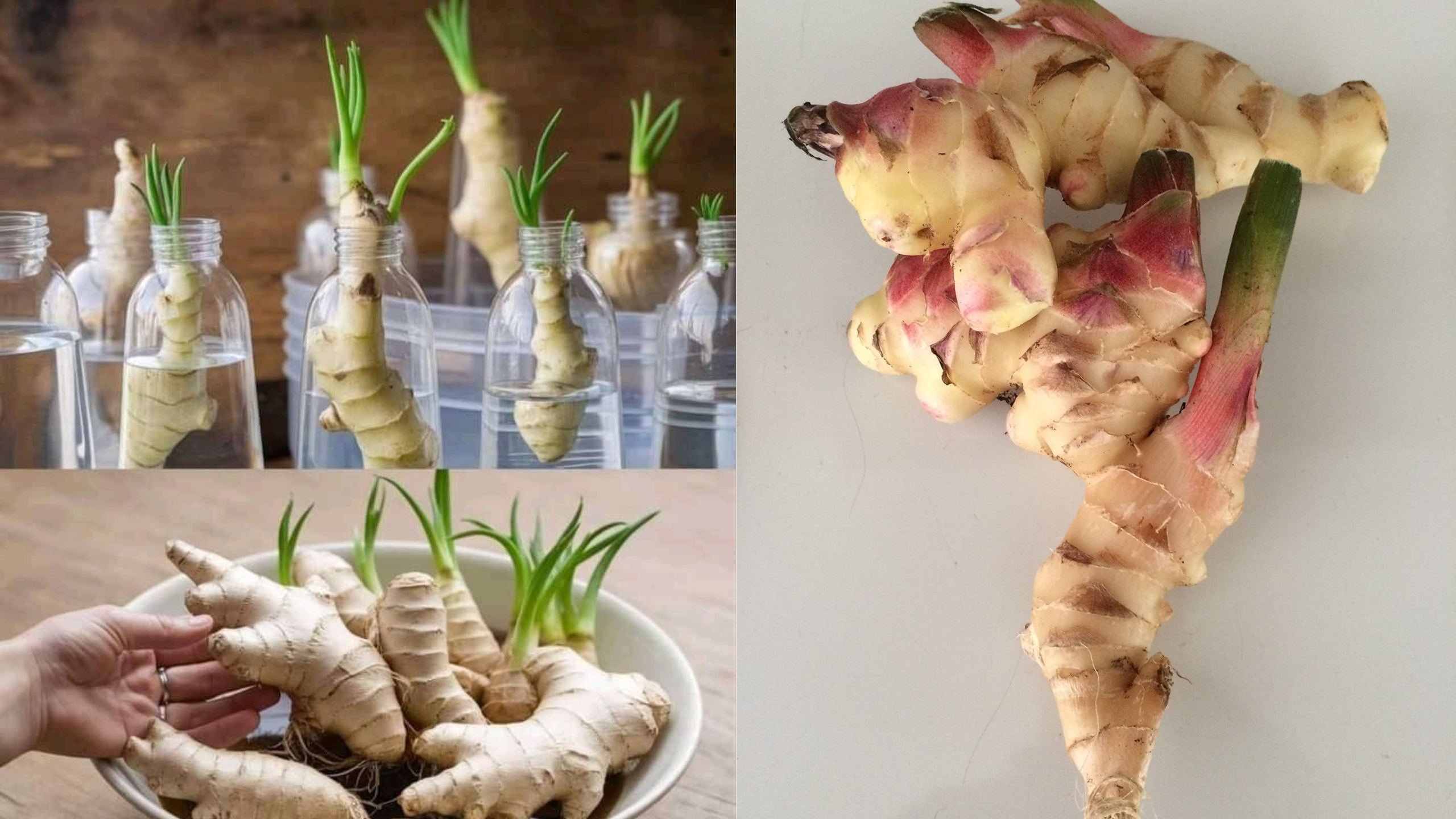Growing your own ginger at home is a rewarding experience that combines gardening, healthy living, and culinary exploration. Whether you have a small balcony, a garden, or just a sunny windowsill, cultivating ginger can be a fulfilling hobby. Not only does it ensure you have fresh, organic ginger whenever you need it, but it also offers numerous health benefits. Let’s explore how to grow ginger successfully all year round and make the most of this versatile root.
Why Grow Ginger at Home?
Freshness and Purity: When you grow your own ginger, you control the quality of the produce. It’s guaranteed to be organic, free from pesticides, and freshly harvested—unlocking maximum flavor and health benefits.
Cost-Effective: Buying fresh ginger regularly can be expensive. Growing it at home reduces costs, especially since a single rhizome can produce many harvests over time.
A Perennial Plant: Ginger is a hardy, perennial plant. Once established, it can be harvested throughout the year, providing a continuous supply of this valuable root.
Space-Saving: You don’t need a large garden—ginger can thrive in pots or small plots, making it ideal for urban gardeners.
Medicinal Properties: Ginger has numerous health benefits—its anti-inflammatory, digestive, and immune-boosting properties make it a superfood you’ll want to grow and consume regularly.
Choosing the Right Rhizome for Planting
Start with a healthy, organic ginger rhizome:

- Opt for organic ginger that feels firm and plump.
- Look for eyes or visible buds—these are the points where new shoots will grow.
- Avoid rhizomes that are shriveled, flabby, or moldy, as they may not sprout well.
If you buy ginger from the supermarket, it’s often been stored for a while. To improve germination chances:
- Soak the rhizome overnight in water before planting. This helps hydrate it and kickstarts sprouting.
How to Plant Ginger
Container Selection:
Choose a pot that’s at least 30 cm deep. Good drainage is essential to prevent rot, so ensure your container has drainage holes.
Preparing the Soil:
Use a rich, well-draining soil mixture—think compost-rich loam with added organic matter. Ginger loves a slightly moist environment, but waterlogging must be avoided.
Cutting the Rhizome:
Cut the ginger into pieces about 5 cm long, each with at least one eye or bud.
Tip: Let the cut pieces dry for 24 hours before planting. This helps prevent rot.
Planting Depth:
Bury each piece about 2-3 cm deep, with the eye facing upward.
Water lightly after planting, just enough to keep the soil moist but not soaked.
Caring for Your Ginger Plant
Watering:
Keep the soil consistently moist—ginger loves humidity. During dry spells, mist the plant regularly.
Temperature & Light:
Ginger thrives in warm temperatures between 24°C and 29°C.
Position the plant in a spot with indirect light—bright but shielded from direct sun, which can scorch the leaves.
Fertilizing:
Feed your ginger with natural fertilizers every month:
- Organic compost or manure
- Plant-based infusions such as fish emulsion or seaweed extract.
Mulching & Humidity:
Apply mulch around the plant to retain moisture and regulate soil temperature.
In dry indoor environments, mist the leaves to emulate tropical humidity.
Pest Control:
Protect your ginger from pests by spraying a neem oil solution periodically. This natural remedy deters insects safely.
Harvesting Ginger
When to Harvest:
- Baby ginger: You can start harvesting small roots as early as 4-5 months after planting.
- Full maturity: Typically around 8-10 months.
- A good sign to harvest is when the leaves start to yellow—an indicator that the rhizome has developed fully.
Harvesting Tips:
- Carefully dig up the roots, taking some for immediate use and leaving others to grow for future harvests.
- You can also harvest partially and replant some of the rhizome pieces to keep your supply ongoing.
Growing Ginger Continuously
To ensure a steady supply throughout the year:
- Stagger planting times: Start new ginger pots every few months to have fresh roots constantly growing.
- Indoor protection: During colder months, bring your pots indoors or into a heated greenhouse to prevent frost damage.
- Maintain humidity indoors: Mist the plants regularly and keep them in warm, bright spots.
Preserving Your Ginger
Refrigeration:
Fresh ginger keeps well in the refrigerator for up to 3 weeks.
Freezing:
For longer storage, peel and cut ginger into small pieces, then freeze for up to 6 months.
Drying & Powdering:
You can also dry ginger slices in the oven or dehydrator, then grind into powder—perfect for teas, cooking, or medicinal uses.
Culinary and Medicinal Uses
Fresh ginger adds a spicy, aromatic flavor to dishes—think stir-fries, teas, smoothies, and baked goods.
It’s also excellent for infusions and herbal teas, soothing digestion and boosting immunity.
Growing your own ginger means you can enjoy these benefits daily, knowing exactly what’s in it.
Final Tips & Reminders
- Start with quality, organic rhizomes to ensure healthy growth.
- Patience is key: ginger takes time to mature, but the reward is worth it.
- Regular care—watering, feeding, and protecting from cold—is crucial for lifelong harvests.
- Experiment with planting schedule and techniques to expand your indoor or outdoor ginger garden.
Growing ginger at home combines gardening pleasure with health and culinary delight. With a little patience and care, you’ll enjoy fresh ginger year-round, enriching your meals and wellness routine. So why not start today and bring a touch of tropical warmth into your home?


1 thought on “How to Grow Ginger at Home All Year Round”